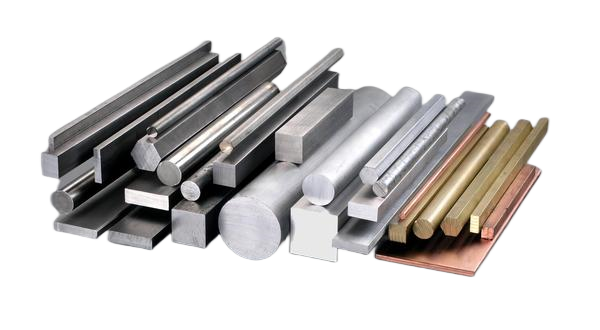It utilizes an array of diverse materials to fabricate solid components through the layer-by-layer deposition of metal powders or wires. The most commonly employed materials encompass:
Metals:
1. Stainless Steel: Renowned for its strength, durability, and corrosion resistance, stainless steel finds widespread use in aerospace, medical, and automotive applications.
2. Titanium: Recognized for its exceptional strength-to-weight ratio and biocompatibility, titanium is extensively employed in medical, dental, aerospace, and automotive applications.
3. Aluminum: Leveraging its lightweight nature, high thermal conductivity, and excellent corrosion resistance, aluminum is prevalent in aerospace, automotive, consumer goods, and electronics.
4. Copper: Widely utilized in electronic devices, copper stands out for its exceptional thermal and electrical conductivity, with applications extending to aerospace and automotive industries.
5. Cobalt-Chromium: An alloy well-regarded for medical implant applications due to its strength, corrosion resistance, and biocompatibility.
6. Gold and Silver: Valued for their aesthetic properties, gold and silver are commonly employed in jewelry, fashion accessories, and electronic devices.
7. Nickel-based Superalloys: High-performance alloys widely adopted in aerospace, automotive, and power generation due to their strength and resistance to heat and corrosion.
Additional Materials:
8. Inconel: A nickel-chromium superalloy lauded for its high strength and exceptional resistance to heat and corrosion.
9. Hastelloy: A family of nickel-based superalloys known for high strength and excellent corrosion resistance.
10. Tool Steels:Esteemed for their high hardness and wear resistance, making them ideal for cutting and forming tools.
11. Maraging Steels: Recognized for their combination of high strength and toughness, making them suitable for aerospace and defense applications.
12. Tungsten: A dense, heavy metal with a high melting point and superior thermal conductivity, making it apt for high-temperature and high-stress applications.
13. Bronze: An alloy of copper and tin appreciated for its strength and corrosion resistance, fitting for marine and architectural applications.
14. Brass: A copper-zinc alloy valued for its strength, corrosion resistance, and distinctive golden color, commonly used in decorative and architectural applications.
15. Carbon Steels: Known for high strength and toughness, carbon steels are applied in automotive and construction applications.
16. Magnesium: A lightweight metal with a high strength-to-weight ratio and excellent thermal conductivity, well-suited for aerospace and automotive applications.
Non-Metallic Materials:
17. Thermoplastics: Versatile polymers suitable for various additive manufacturing techniques, including Fused Deposition Modeling (FDM) and Stereolithography (SLA). Common thermoplastics include ABS, PLA, and Nylon.
18. Ceramics: Inorganic, non-metallic materials known for high strength and durability, utilized in additive manufacturing for high-temperature resistance and electrical insulation. Examples include alumina, zirconia, and silicon carbide.
19. Biochemicals: Derived from living organisms, biochemicals offer unique properties such as biocompatibility. Used in additive manufacturing in powder or paste form, examples include bio-inks, hydrogels, and cellulose.
The selection of materials in additive manufacturing is tailored to specific applications and requirements, contributing to a broad spectrum of possibilities across industries.

